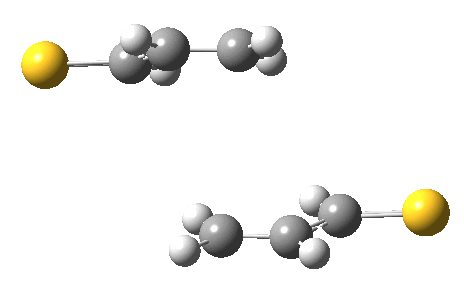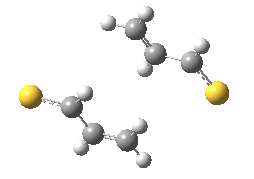The previous post showed how the 2+2 cycloaddition of an alkene could occur by a sort of sideways insinuation of the bonds. I have also shown how the same reaction can occur with a dramatic rotation of one of the double bonds. This post compares the two moves side by side.
| 0.0 | 5.3 kcal/mol |
As is sometimes the case in real life, the forbidden option has the lower activation barrier!
Author
-
Henry Rzepa is Emeritus Professor of Computational Chemistry at Imperial College London.
View all posts
Share this:
Related

Detecting anomeric effects in tetrahedral boron bearing four oxygen substituents.
In an earlier post, I discussed[cite]10.59350/dfkt5-k2b20[/cite] a phenomenon known as the "anomeric effect" exhibited by tetrahedral carbon compounds with four C-O bonds. Each oxygen itself bears two bonds and has two lone pairs, and either of these can align with one of three other C-O bonds to generate an anomeric…
Similar post
The solvation of ion pairs.
Solvolytic mechanisms are amongst the oldest studied, but reproducing their characteristics using computational methods has been a challenging business. This post was inspired by reading Steve Bachrach's post, itself alluding to this aspect in the title "Computationally handling ion pairs". It references this recent article on the topic[cite]10.1021/jo501012s[/cite] in which…
In "reaction mechanism"

Chemical Bonds at the 21st Century – 2017: the Bond Slam.
It is always interesting to observe conference experiments taking place. The traditional model involves travelling to a remote venue, staying in a hotel, selecting sessions to attend from a palette of parallel streams and then interweaving chatting to colleagues both old and new over coffee, lunch, dinner or excursions. Sometimes…
In "Bond slam"
Tags: pericyclic, Tutorial material
This entry was posted on Thursday, December 15th, 2011 at 5:36 pm and is filed under Interesting chemistry. You can follow any responses to this entry through the RSS 2.0 feed. You can leave a response, or trackback from your own site.

